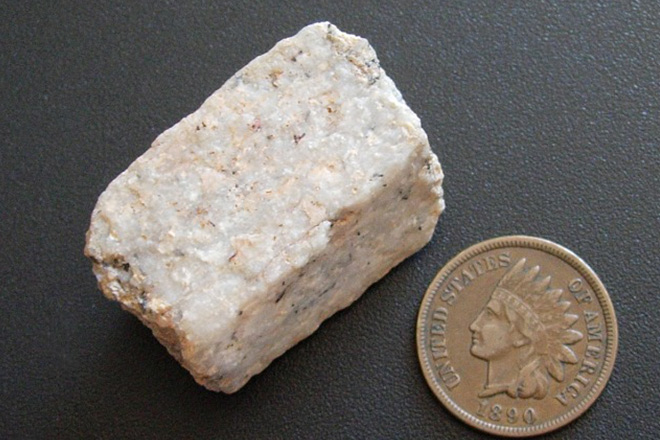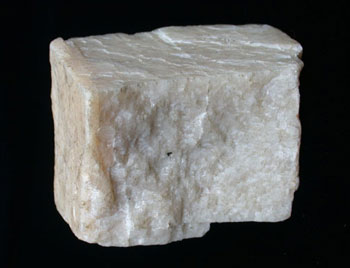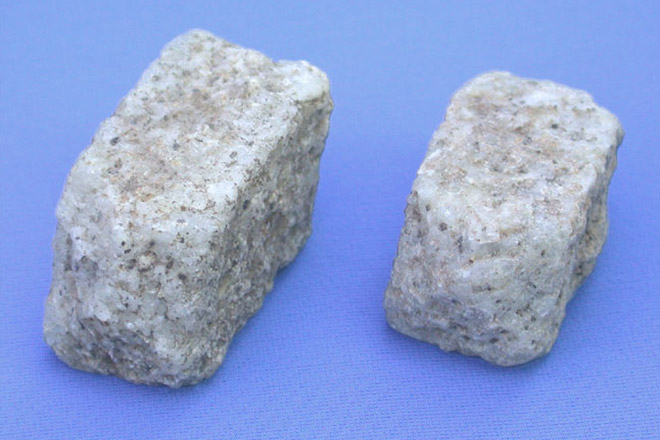Our Product
for view more details click on product name
for view more details click on product name
Feldspar, any of a group of aluminosilicate minerals that contain calcium, sodium, orpotassium. Feldspars make up more than half of Earth’s crust, and professional literature about them constitutes a large percentage of the literature of mineralogy.
Of the more than 3,000 known mineral species, less than 0.1 percent make up the bulk of Earth’s crust and mantle. These and an additional score of minerals serve as the basis for naming most of the rocks exposed on Earth’s surface.
Description and Identifying Characteristics ‘Feldspar’ is derived from the German word feld,which means ‘field’, and spar, which means ‘crystal’. This name reflects the minerals’ abundance, as most crystalline material found in the field is feldspar. Potassium feldspars are the feldspar minerals in which the silicate tetrahedral and aluminum tetrahedra are bound with potassium ions, rather than sodium or calcium ions as in the plagioclase feldspar subgroup. The potassium feldspar group is composed of three mineral polymorphs, each having the same chemical composition, but slightly different crystal structures. Technically these are distinct minerals, but their physical properties are so similar that they are usually only identified as ‘potassium feldspar’ in the field. Using other minerals in the rock to determine the host rock’s identity is often the most useful guide to their probable identity. felsic plutonic igneous rocks and metamorphic rocks Microcline


| Mineral | Color | Occurrence: |
| Orthoclase | white or pink | potassium-rich volcanic rocks |
| Sanidine | colorless | felsic plutonic igneous rocks and metamorphic rock |
| Microcline | white, pink, or green | granite, pegmatites, & low temperature hydrothermal veins |
Basically, the two properties which make feldspars useful for downstream industries are their alkali and alumina content. On those elements we can distinguish three families: Feldspathic sand, Pegmatite and Feldspar. A further distinction can be made between sodium, potassium and mixed feldspars, depending on the type of alkali they contain. Feldspars play an important role as fluxing agents in ceramics and glass applications, and also are used as functional fillers in the paint, plastic, rubber and adhesive industries.
Glass: Feldspar is an important ingredient in the manufacture of glass and an important raw material as well, because it acts as a fluxing agent, reducing the melting temperature of quartz and helping to control the viscosity of glass. The alkali content in feldspar acts as flux, lowering the glass batch melting temperature and thus reducing production costs.
Ceramics: In the manufacture of ceramics, feldspar is the second most important ingredient after clay. Feldspar does not have a strict melting point, since it melts gradually over a range of temperatures. This greatly facilitates the melting of quartz and clays and, through appropriate mixing, allows modulations of this important step of ceramic making. Feldspars are used as fluxing agents to form a glassy phase at low temperatures and as a source of alkalies and alumina in glazes. They improve the strength, toughness, and durability of the ceramic body, and cement the crystalline phase of other ingredients, softening, melting and wetting other batch constituents.


Fillers: Feldspars also are used as fillers and extenders in applications such as paints, plastics and rubber. Beneficial properties of feldspars include good dispersability, high chemical inertness, stable pH, high resistance to abrasion, low viscosity at high filler loading, interesting refractive index and resistance to frosting. The products used in such applications are generally fine-milled grades.
Enamel frits and glazes: Feldspar assists the enamel composition, assuring the absence of defects and the neatness of the end product: e.g. enamel frits, ceramic glazes, ceramic tile glazes, sanitaryware, tableware, electrical porcelain and giftware.
And many other end-uses: paint, mild abrasives, urethane, welding electrodes (production of steel), latex foam, the welding of rod coating, and road aggregate.
In the flooring sector, feldspar is the main constituent in the body composition. It is used as a flux, lowering the vitrifying temperature of a ceramic body during firing and forming a glassy phase. Surface tension pull the remaining solid particles together, giving a densification of the ceramic body. With rising temperatures the alkalis become more active and first dissolve the clay particles and then the free silica. In tableware, feldspar gives a good fusibility for a product without defects.
In sanitaryware, the use of feldspar within vitreous ceramic bodies is used to facilitate the optimization process.